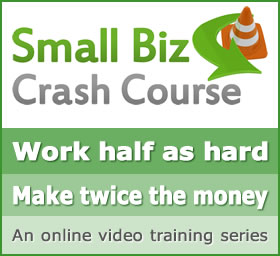Yesterday we told you what Sequoia Capital looks for in a business plan to help you build an outline for yours. A business plan is a roadmap for your business. You have to have one in order to maneuver successfully. Today, we have some more specific tips for creating an elegant, streamlined business plan. Again, this outline comes straight from Sequoia Capital.
In fifteen or twenty slides, you can pack in all the information you need to wow an investor, banker, partner or employee.
The key is, make every word count. Use a picture, like a chart, when you can. It captures a lot quickly. People get it faster. Here goes…
Company Purpose
-
Define the company or business in a single, declarative sentence.
-
For example: “The mission of XYZ Corp. is to ___________ for ABC audience.” Or “XYZ Corp. exists to____________ for ABC audience.”
Problem
-
Describe the customer’s problem (or the customer’s customer). Be sure to define the customer as clearly as you can.
-
Explain how your target customer deals with the particular issue currently, without your solution.
Solution
-
Demonstrate how your value proposition will improve the life of your target customers.
-
Show how your value proposition compares to and is better than your competition’s.
-
Prove it through market tests, testimonials, customer feedback.
-
If you can prove that your solution is more compelling than your competition’s by using the testimony of the end-user or potential customer, that’s worth gold.
Why Now?
-
Describe the evolution of your particular market, and why your timing makes sense.
-
Define recent trends in the market that make your solution compelling.
Market Size
-
Describe the customer you cater to. Include their current purchasing patterns, usage patterns, the preferences they exhibit, and the number of potential buyers that would be interested in your product.
-
Calculate the top down and bottom up share of market that you think you can gain, given your unique selling proposition, competitive pressures, and unmet demand.
Competition
-
List top ten competitors online and offline.
-
List their competitive advantages: what niche they occupy, whom they serve, how successful they are (give specific size and market share).
Product
-
Describe your product or service line. This includes functions, features, & unique sources of value like intellectual property or trademarks. Include your pricing rationale.
-
Describe how you will create, deliver and service (after the sale) your products or services.
-
Provide a timeline to break even on unit sales. If you don’t what what “break even” means, you need to watch the videos in the Learn section of Best Small Biz Help.com. It’s important. And not that complicated. Once you watch the video, you’ll never be confused again.
Business Model
-
Here’s where people get really hung up. Keep it simple.
-
Just remember, you’re building a pro-forma Profit and Loss Statement for your audience.
-
If you don’t know what a Profit and Loss Statement is, we have videos for that too. They explain it simply. Just for you.
Answer these questions:
-
What are your assumptions about generating revenues? How many prospects do you need to reach to get one sale? What is the size of an average sale? How many prospects can you reach and sales can you make each quarter? How will you reach them?
-
Rationalize your pricing. How will you build your average sale or consistent sales?
-
Average account size and/or lifetime value of that account or customer. What percentage of first time buyers will become repeat buyers, and for how long?
-
What is your sales and distribution plan? How will you get your message out to the right audience at the right time broadly enough for you to build a profitable company?
-
Where will you get your customers from? List your prospects, pipeline, or sources of same.
Team
-
Founders and Management
-
Board of Directors/ Board of Advisors
-
Collaborators
Financials
-
These are all proforma so they won’t be perfectly accurate. No one has a crystal ball. Run the numbers anyway. You’ll have a pretty good idea of the expenses, at least.
You must include:
-
Profit and Loss Statement for at least two years.
-
Balance Sheet for two years. This will capture how you’ll finance the enterprise and debt ratios.
-
Cash Flow Statement. Yes, you need to do this, otherwise, you’ll go bankrupt. Don’t know what a Cash Flow Statement is? Watch our Accounting Basics videos. They explain it in plain English. I promise.
Hopefully, we’ve given you a template you can use to make an outline and streamline your efforts to create a roadmap for your business.
Still feel stuck? Don’t panic. We have the only help desk for small businesses online.
And www.sequoiacap.com has great wisdom on their site. Don’t take our word for it. Visit them. They’re pros too.
This article is part of a series on How To Start Your Own Business. For more tips on what to consider in your business plan outline, read “How to Outline Your Business Plan.”


